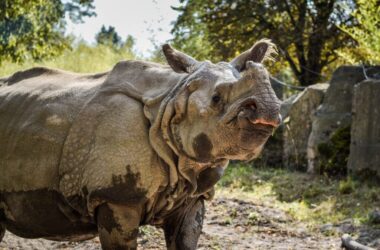A feral sika deer herd has been located on farmlands in the Opole region using advanced drone technology, raising concerns about their invasive status and potential impact on local ecosystems.
Opolszczyzna. A Flock of Feral Sika Deer on Farmlands. “A Threat to Poland”
Feral Sika Deer Herd Spotted on Farmlands
The Foundation for Nature (Koło Natury) revealed that a feral sika deer herd (Cervus nippon) has appeared on farmlands in the Brzesk County (Opole Voivodeship). “We received a task to precisely locate the escaped herd. We used a specialized DJI Matrice 4T drone with thermal imaging. Within seven minutes of takeoff, Adrian Grela, our foundation’s president, identified a cloud of dozens of grazing sika deer in a cornfield, including this year’s calves and bulls,” the post states. Koło Natury has collected extensive photographic and video documentation showing the herd’s numbers and behavior.
Sika Deer: An Invasive Species and Potential Threat
The sika deer is classified as an invasive foreign species. It spreads parasitic nematodes, which can infect cattle, including bison, and hybridize with the native red deer. “This is a fascinating species with a beautiful coat and distinctive white cheek patches—uncommon in our region. However, the observation becomes alarming because sika deer are an invasive non-native species (IGO), which legally constitutes ‘a threat to Poland,’” the foundation explained. Their presence poses risks as they carry diseases and could disrupt native ecosystems through hybridization.
A Series of Questions About the Deer: “What to Do Next?”
Koło Natury emphasized in the post that the appearance of the herd has raised several questions, including their origin and accountability for “elimination” (a term from the IGO law). Theoretically, the foundation noted, individuals might hunt the sika deer, but the herd currently numbers 100. “If sika deer are not considered game, what happens to the carcasses after individual or collective hunts? Since they are no longer classified as game, it is unclear whether hunting regulations apply to their disposal. Utilizing their meat would be the least rational option, but no scenario can be ruled out,” the foundation warned. “If not culled, what other measures exist? I find it intriguing whether any environmental organization proposes an alternative, such as relocation. A hundred deer… and what then? Who would be responsible for them?”
Source: Gazeta, Fundacja Koło Natury on Facebook










